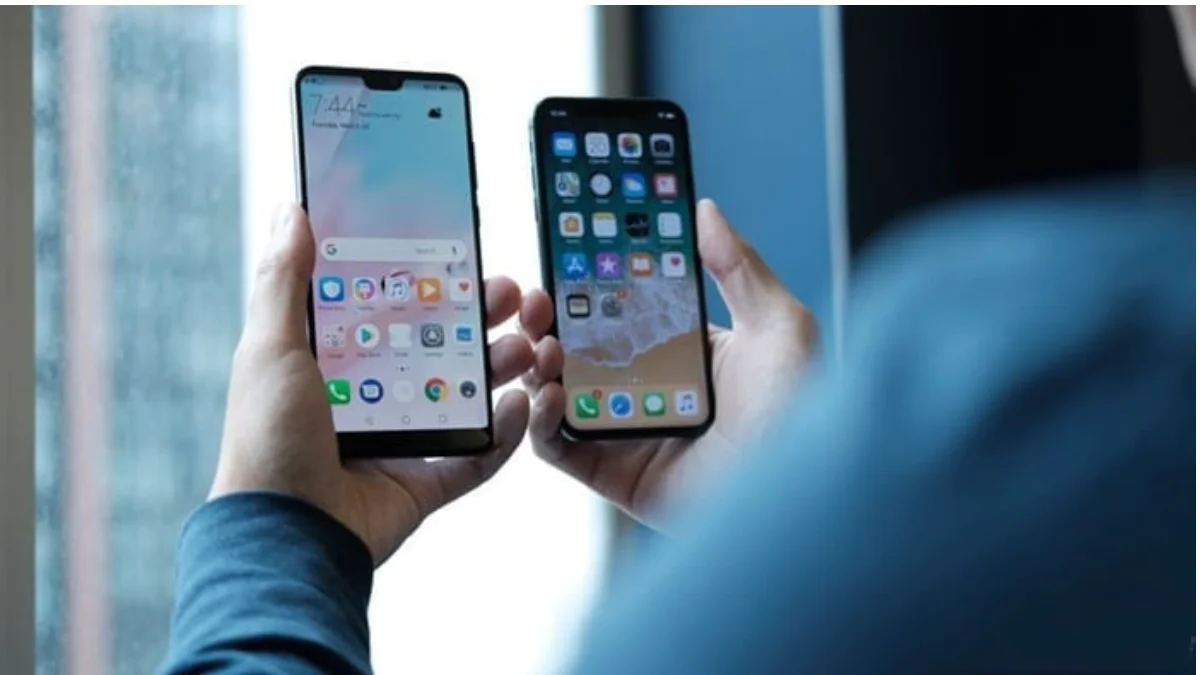People are becoming more interested in design, photography, space, and other things than just making a phone call. The smartphone has evolved into a mini-computer that we carry with us at all times. It now performs several functions with just a few finger taps.
With the advancement of technology, new design aspects in smartphones are becoming more common. Nowadays, AMOLED, OLED, and pOLED displays are frequently discussed. Many people are wondering about the differences between these three fundamental LED display technologies that are available today.
AMOLED vs OLED vs pOLED
OLED Displays:
The word OLED stands for Organic Light Emitting Diode. In general, OLED Displays have an LED, which is an organic material that generates light when current is sent through it. OLED displays are commonly utilized to show vivid colors. These screens use less electricity while delivering dark colors.


As previously stated, OLED displays’ organic layers are smaller, lighter, and more flexible. Because of the light emitting layers, they are lighter and more flexible than stiff. Unlike LCDs, they do not require backlighting.
Unlike LEDs, these are substantially brighter. OLED displays are simple to make. They can be created in greater sizes if necessary. They have wide fields of view, approximately 170 degrees.
Unfortunately, OLED displays have a shorter life span than LCD and LED displays. They have different color balances. Because they are not water resistant, they are readily ruined by water.
AMOLED Displays:
AMOLED is the acronym for Active Matrix Organic Light Emitting Diode. The current flow in each pixel is controlled by a thin film transistor (TFT) in this form of display, which is based on an active matrix technology. It has two thin film transmitters that operate differently. One is used to start and stop charging of the storage capacitors, while the other is utilized to make charging easier.


When it comes to display size, AMOLED has no boundaries, and it consumes less power than OLED and LED screens. It is the most recent technology on the market, and many gadget manufacturers are aggressively pursuing it due to its outstanding performance. It is thinner, lighter, and more flexible than other display technologies such as LED and LCD.
AMOLED can be simply integrated into any size display. When compared to PMOLED, it offers a substantially faster refresh rate. It’s used in a variety of industries. They have significantly better viewing angles than IPS LCDs.
One of the most significant drawbacks of AMOLED displays is that their quality deteriorates over time. These are extremely susceptible to screen burn-in. In comparison to other display technologies, they are relatively expensive.
pOLED Display:
pOLED stands for Plastic Light Emitting Diode. It’s a type of display that uses a flexible plastic substrate, such as polyethylene terephthalate (PET), instead of a glass, to house the electroluminescent organic semiconductor. The display screen can be stretched and folded without shattering since it is made of more pliable plastic rather than glass.
The pOLED display is more durable than the glass panel. Because they are more flexible than regular OLED screens, as they are substantially more shockproof. These panels are also less expensive and sleeker than glass panels, which means that makers will be able to produce slimmer smartphones and tablets with them.


They’ll also let smartphone makers produce displays with thinner bezels, though how that works is still unknown. However, OLED panels have a greater display quality than pOLED panels since glass has far better optical qualities than plastic and is also clearer. In comparison to glass, the plastic used in pOLED displays is more easily scratched.
The Bottom Line: Which One is Better?
In this technological era, smartphone displays have changed more than most people know. Display screens act as windows into the mobile world, which has undergone a rapid transformation in terms of innovation and technology.
People have become more selective when it comes to phone features in recent years, but the display has always stood out. All of the major smartphone manufacturers are attempting to provide their customers with the most advanced gadgets possible. Because AMOLED is essentially a form of OLED and a better version of both OLED and pOLED, there is no debate about which is superior.
Read More:
- IP68 vs IPX5: What is the difference between the two IP Ratings?
- GB WhatsApp Update: All You Need to Know in 2023
- Y2Mate Video Downloader vs Other Online Video Downloaders: A Comparison
- Top 10 Most Technologically Advanced Countries in 2023


